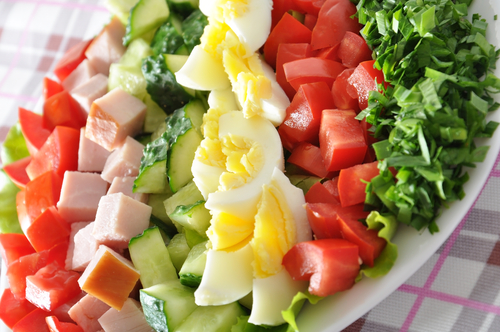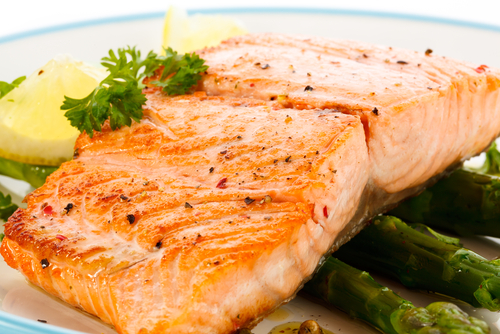As we age, many things can affect our appetites, which, in turn, affect our nutrition. The senses of smell and taste decrease as we age This makes some foods less appealing. Even medications can change the taste of foods, such as causing a metallic taste or reducing appetite. Poor elderly nutrition can also be caused by poor dental health. If your teeth are loose or painful, it is difficult to eat foods. Depression can lead to poor nutrition because it is difficult to find the energy for grocery shopping, much less to prepare a meal.
Sometimes a senior is hungry but has no way to get to the grocery store in bad weather, or they don’t have enough money. Some seniors are having to choose between food and their medications due to inadequate income. If you are a dementia caregiver, your senior with dementia may forget to eat or have difficulty with food preparation. You may want to consider at-home caregivers or Meals on Wheels.
On the other end of the spectrum, many seniors are having a problem with weight gain. As we age, we don’t need as many calories. If your diet hasn’t changed, you may find yourself gaining weight. The solution is to either decrease the portion size, substitute healthier food choices, or eliminate certain foods.
Here are some simple ways to assure a healthy diet:
1. Water. Though it provides no nutritional value, water is an essential part of a healthy life. Your senior should strive for 60-70 oz of water throughout the day. Water helps with digestion, and it helps flush waste from the body. The lack of enough water leads to dehydration and can cause drowsiness and confusion. Note: Some seniors are on a fluid restricted diet for health reasons. Always check with your doctor before making changes to your diet.

2. Colorful Food. If you try to have multiple colored foods on your plate for each meal, the chances are high that you will get all the nutrients needed over the course of three meals. Think red for tomatoes, berries, and beets. Green on the plate could be green beans, broccoli, and kiwi. Yellow could be corn, squash, or pineapple. You get the picture!
3. Fiber. Foods that are high in fiber help your digestive tract to function properly. These foods include whole grains like brown rice, fruits, and vegetables.
4. Calcium. Calcium is necessary for strong bones. This is important as we age and are more susceptible to osteoporosis. Include cooked dark green leafy greens like collards, milk, ice cream, cheeses, and yogurt to include calcium in your diet.

5. Omega 3 Fatty Acids. Omega 3 fatty acids are important for heart health. They are found in fish like tuna and salmon, walnuts and flax seeds, and soybeans.
6. My Plate. The Food Pyramid has been replaced by a new, easier to understand visual called My Plate. My Plate emphasizes a higher amount of fruits and vegetables. At least half of your plate should be filled with fruits and vegetables.
If you are a senior caregiver, try to prepare meals with whole foods. If you need to use processed foods, read the labels. Try to choose products that contain low salt, low fat, and no added sugar.
The following is the recommended amount of servings from each food group, per the American Heart Association:
- Water. An average amount of eight, 8oz glasses of water per day is needed.
- Vegetables. The American Heart Association recommends that you have five servings per day. Examples are 1 cup of greens, a ½ cup of peas or beans, or a ½ cup of cooked vegetables.
- Fruit. The American Heart Association recommends that you have four servings per day. This could include one piece of medium-size fresh fruit, a ½ cup of cut up fruit, and a ¼ cup of dried fruit.
- Grains. The American Heart Association recommends six servings per day, half of which should be whole grain. This can include one slice of bread, a 1/2 cup of cooked pasta, and a ½ cup of popped popcorn.
- Dairy. The American Heart Association recommends three servings per day, preferably low-fat or fat-free. A serving can be one cup of milk, or yogurt, or 1 and a ½ ounces of cheese.
- Eggs, Meat, Poultry. The American Heart Association recommends 8-9 servings per week. They also recommend that the skin and all visible fat is removed. A serving of meat is 3 oz. One whole egg or two egg whites are equal to one serving.
- Seafood. The American Heart Association recommends 2-3 servings per week. A serving size is 3 oz. It is preferable that you choose a fish high in omega three fatty acids.
- Nuts, seeds, beans, legumes. The American Heart Association recommends five servings per week. A serving includes one tablespoon of peanut butter or two tablespoons of nuts or seeds.
- Fats and oils. The American Heart Association recommends three servings per day. It is preferable that you use unsaturated fats. A serving includes one tablespoon of low-fat salad dressing, one tablespoon of margarine, or one tablespoon of vegetable oil.

The above recommendations are based on a 2000-calorie-per-day diet, so you should adjust it based on your personal needs. Remember, you will need fewer calories if you are not physically active. Try new foods and experiment with new recipes. Visit the farmer’s market and purchase the freshest, and often organically grown, fruits and vegetables. Often the vendors will have recipes available on how to prepare their produce. One day a week, try making foods from different cultures. Have fun with food!

